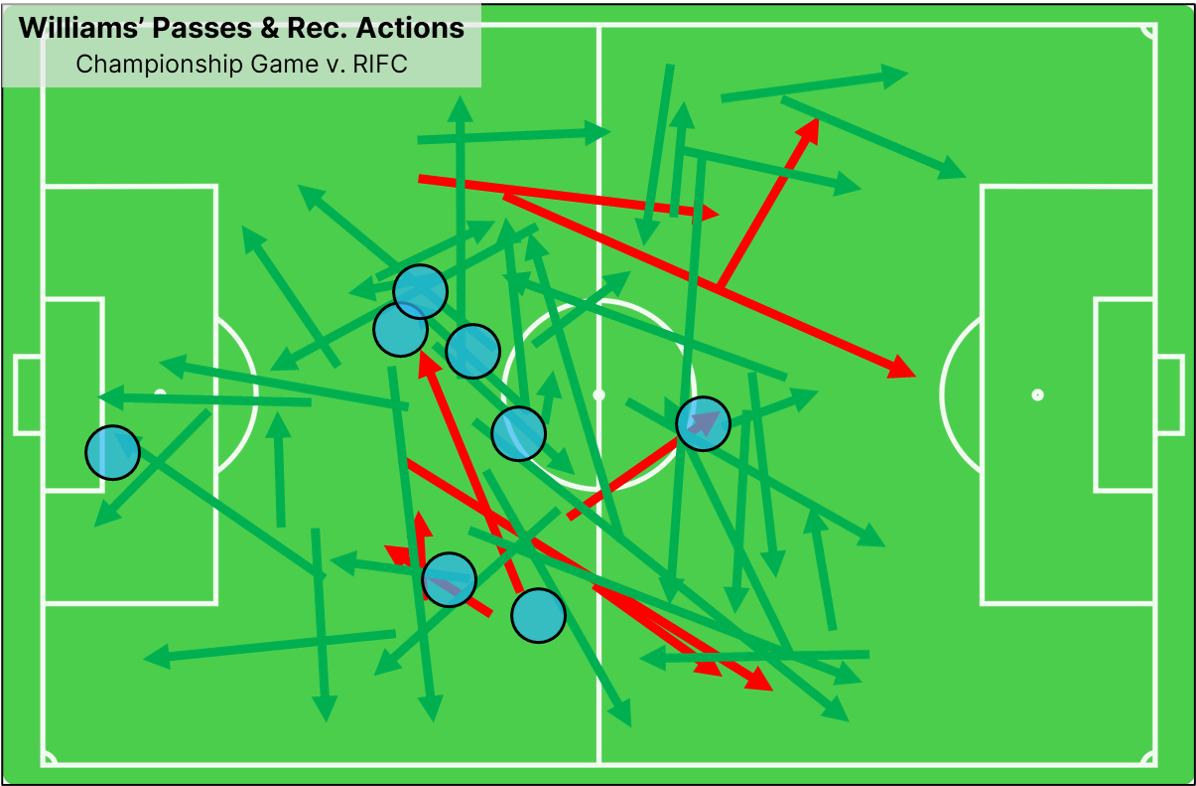Signing Breakdown: Speedy Williams to Lexington
What the four-time USL champion brings to a revamped, rising Lexington
Speedy Williams wins championships. He’s done it in New York, Louisville, and Colorado Springs, and now he’ll be the veteran presence tasked with elevating Lexington to that level in 2025.
As Lexington ascends from a middling USL League One tenure into the USL Championship, they’re re-making their team in manager Terry Boss’ vision. Williams’ staid midfield contributions are the perfect piece to anchor what ought to be an aggressive philosophy. No other No. 6 in league history can boast of the Jamaican international’s composure and consistency in the center of the park.
Williams previously spent four years in Kentucky as a member of Louisville City, so his move to Lexington SC is something of a professional homecoming. Don’t let that imply that this is a cute retirement story. Even in his age 32 season in Colorado Springs, Williams showcased the poise and efficiency that’s made him a standout over the course of the last decade.
A great defensive midfielder knows how to set the tempo offensively alongside their off-ball contributions. Williams, who took 66 touches and completed 3.2 long balls per game last year, understands how to keep play moving and when to push forward apace.
His defensive contributions tend to be positional more than actively interventional. Williams ranked in the 26th percentile for tackles won in 2024, but you’d be hard-pressed to find a player that did a better job of rotating low and maintaining structure.
When called upon, the No. 6 was effective in challenges. Williams’ duel win rate ranked in the 67th percentile, and he went a very strong 14 for 24 on duels during Colorado Springs’ postseason run against the highest-level midfields in the USL.
Williams’ performance in the title game is a useful telescope through which to view his talents. You’ll note two flavors of contributions highlighted above: pass attempts and recovering actions (i.e., tackles, interceptions, and actual recoveries). By both categories, Williams’ impact is obvious on the page.
It’s easy to think “defensive midfielder” and assume that the player in question will camp out around the center circle and never make a run. Williams belies that stereotype. Above, you’ll note a few final third entries passes from the left half space. There’s ample side-to-side engagement on show. Speedy Williams constantly makes himself available in service of team-wide flow and progression.
Defensively, though, that implicit concentration in the midfield third shines through. Without possession, Williams is highly disciplined. Throughout 2024, his ability to stand tall under fire in front of a high Switchbacks back line was consistently impressive.
You see that skillset bearing out here, with Colorado Springs pressing, winning the ball back, and quickly advancing to score. Williams’ role throughout the sequence is subtle but of vital importance.
Let’s go moment by moment. Colorado Springs, who ranked as a top-ten pressing team with 3.8 final third regains per match, starts off in a 4-2-3-1 in the frame above but is already midway through a shifting rotation.
By design, the attacking midfield line flexes high on the ball side. Here, that means the left winger will push and close down on the ball. To fill the space vacated by that winger, the left back also advances.
The domino effect continues further downfield, as seen here. Both central defenders for Colorado Springs rotate wide toward the left to fill space vacated by their advancing linemate. In the act, they leave a ton of space open in the central seam.
Here, the opposition plays a long ball over the press. If they claim the ensuing knockdown, there’ll be an open lane up the middle through which to attack.
Enter Williams. If the visitors claim that second ball, he’ll be ready to sprint back, get low, and fill in like a proxy central defender. The No. 6 doesn’t even let the play reach that inflection point. Instead, he flexes his superior ball recovery skills and claims the knockdown.
Williams first-times a pass to his pivot partner after regaining, allowing Colorado Springs to relieve themselves against the opposing counterpress. Still, the play isn’t over. Because his fellow center mid has tucked low, Williams knows that he needs to push up and provide an offensive threat. The Switchbacks tried to shift from a 4-2-3-1 into a 4-1-4-1 with the ball last season, and it’s the new Lexington man letting it happen here.
That edge-of-the-box run from the Jamaican international isn’t the only thing that sets up a rebound goal, but it’s still important. By occupying space on the edge of the 18-yard box, Williams draws the attention of a center mid and the opposing left back. In doing so, he buys just enough space for his teammate to come good.
It’s that sort of intelligence that makes Speedy Williams so terrific. Across phases of play, the veteran midfielder knows where he needs to be to maximize his impact.
That Williams looked so strong in a fairly fluid Colorado Springs system is a positive sign for his role in Lexington. New manager Terry Boss has a history of preferring back three-turned-back four hybrids not unlike the Switchbacks’ pressing shape. If Boss needs an anchor in his midfield to make it all work, he couldn’t have picked a superior cornerstone to Speedy Williams.
Will it lead to yet another trophy on the 32-year-old’s shelf? Time will tell. For now, it’s safe to conclude that Williams raises Lexington’s floor considerably and shows that they’re ready to compete.







It's puzzling that these major contributors are not locked up for multi-year deals. It seems he's earned a status beyond that of being a journeyman! Hopefully, each of these moves came with at least more than modest increases in pay.....